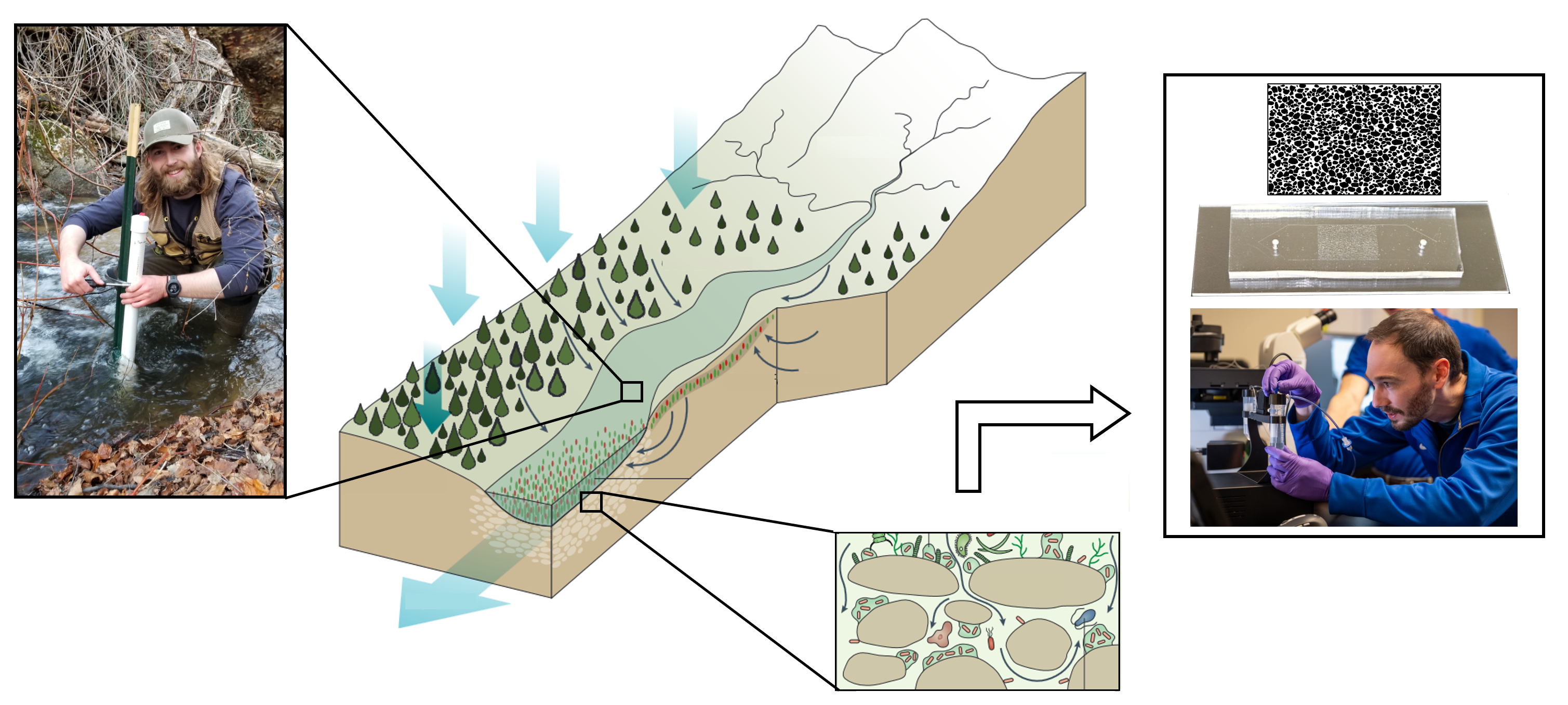
We seek to understand how the fundamental interactions between fluid transport, bacterial activity, and water chemistry determine the health of streams and aquifers. We conduct experiments at scales ranging from the laboratory (µm–m) to the field (m–km), and we develop mathematical models to establish a parsimonious link between these scales. For our results to be predictive , they must account for the fact that system-scale behavior is often determined by activity occurring at interfaces, such as where surface water meets groundwater or at the edge of a bacterial colony. We’re motivated by the following questions:
- What are the primary controls of water quality in freshwater systems, and how do they vary in space and time?
- What feedbacks exist between bacterial growth, hydrodynamics, and reactions in confined flowing environments such as groundwater?
- How do we leverage our understanding of pore-scale phenomena to predict reactivity at larger scales (e.g., a river reach)?